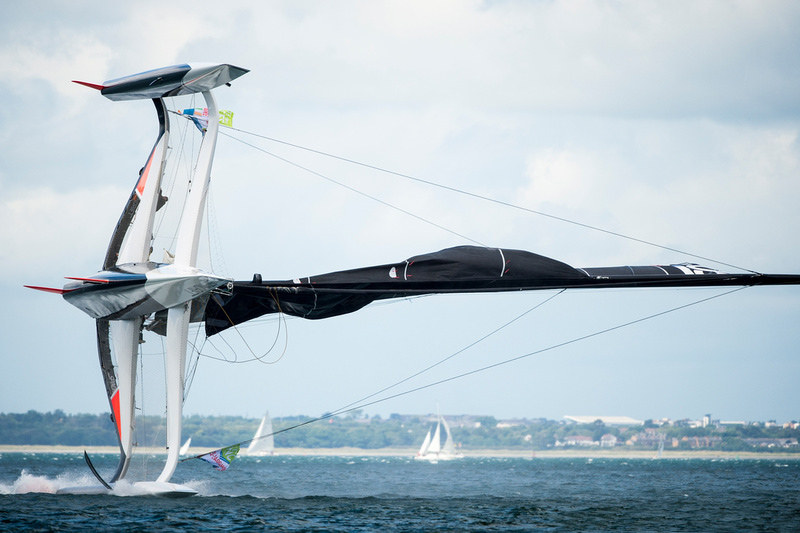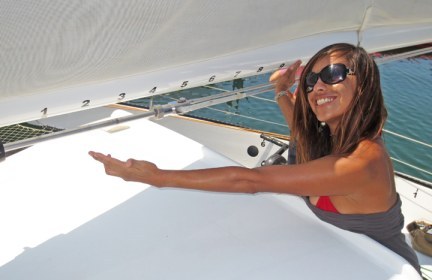
MOD70 Spindrift Flips During Inshore Race

In the upcoming July issue of Latitude 38, we give two reasons for preferring MOD70 trimarans over AC72s for the America’s Cup. The first is cost. Because the MOD70s have soft sails and are a strict one design, they can be built and maintained for a fraction of the cost of just the wing sail for an AC72 catamaran. The second reason is that because MOD70s are longer, depowered versions of the ORMA 60 tris and, because they have safely raced across the Atlantic at higher speeds than any vessel under 100 feet, they would seem to be less likely to flip than the 72s. But, as we clearly stated, this doesn’t mean MOD70s are immune to flipping.
As if to prove our point, on June 22, Spindrift, one of seven MOD70s built to date, flipped during one of the La Route des Princes inshore races off Dun Lagohaire. It was the first time a MOD70 has flipped. Unlike the tragic flipping of the AC72 Artemis on San Francisco Bay, skipper Yann Guichard didn’t hesitate to explain exactly what happened:
"We had 22 to 24 knots of wind at the start line with gusts up to 30 knots at the lower end of the course. We were at the limit of weather conditions for our boats, and it was not great for racing. All the MODs had one reef in the main and staysail. We started a bit below and behind the fleet, and found ourselves slightly in a wind shadow. When our rivals had moved away, we had a sudden gust that flattened us. I was unable to do anything at the helm, the boat was turned over in a single blow. We let out the staysail immediately, but it was too late as it all happened in a split second. The boat was lifted onto the port float and went over. Jacques [Yann’s brother] was with me in the cockpit and we found ourselves in the net. We managed to get out and then were airlifted. The mast broke in two when Spindrift turned over. The frame of the trimaran was towed away to port."
Jacques suffered a broken pelvis.
As reported in a recent ‘Lectronic, the Wanderer and Doña de Mallorca sailed aboard the MOD70 Orion on Banderas Bay at speeds up to 35 knots in true wind of about 20 knots. The thing that puzzled us was that you could only ease the mainsheet about three feet. When we sailed on Steve Fossett’s ORMA 60 Lakota years ago, we’d also been surprised at how short the mainsheet was, although as we remember, it was somewhere between eight and ten feet long. Based on the above video of the accident, it doesn’t seem to us that the trimaran flipped in a "split second," and that had there been a ‘panic button’ to instantly release the mainsheet, as there was on Lakota, it’s possible that the trimaran could have been kept from flipping. But clearly nobody can guarantee that any of these high performance multihulls won’t flip.

©2013 Latitude 38 Media, LLC
The danger with big racing multihulls is, of course, not that they will sink, but that members of the crew will be hurt falling from high above the water onto a hard surface, or that they will be trapped under the nets.
